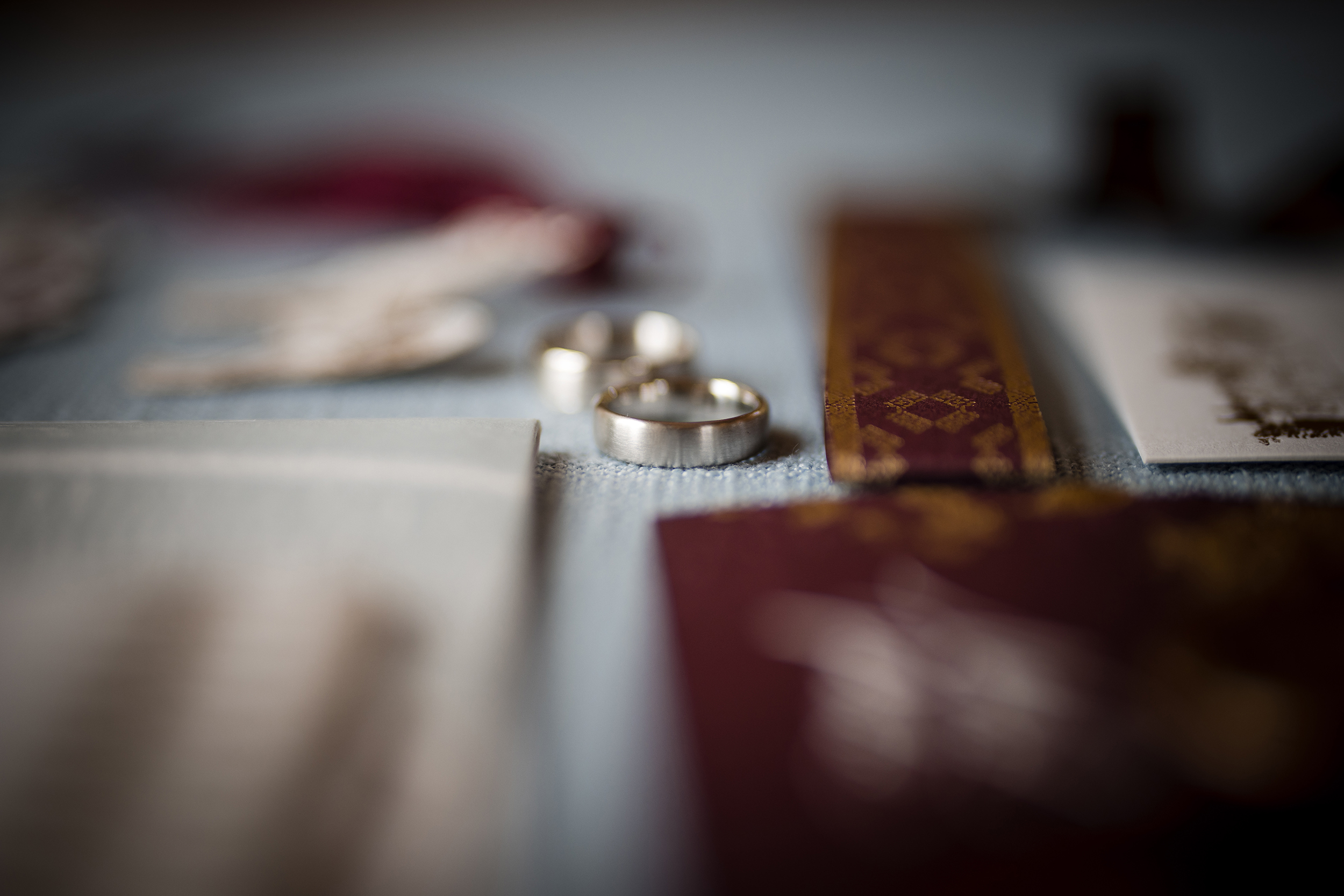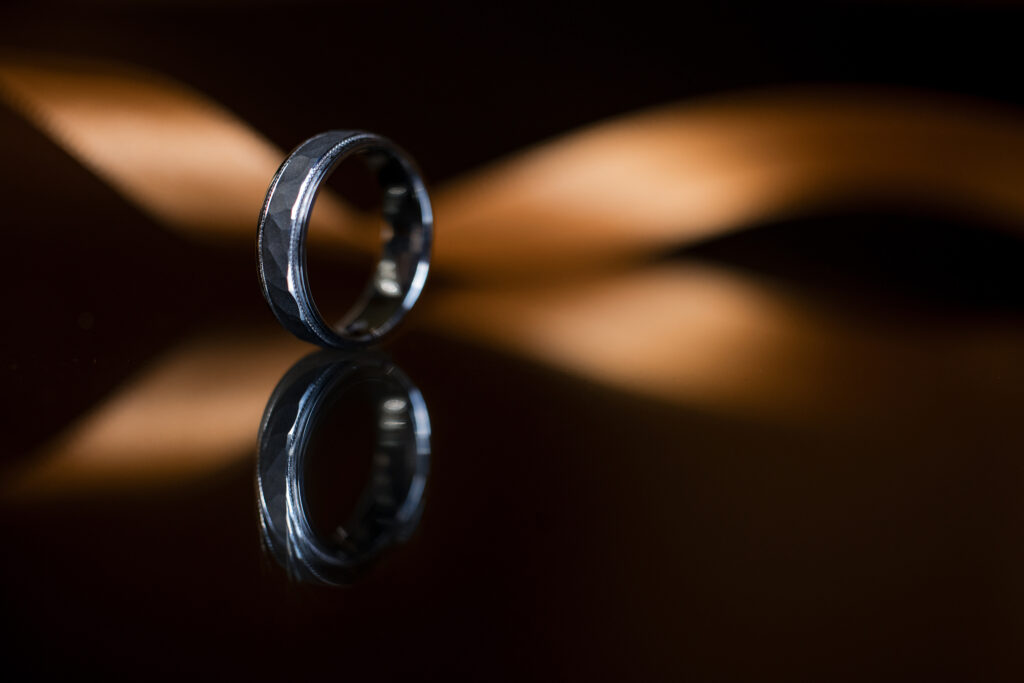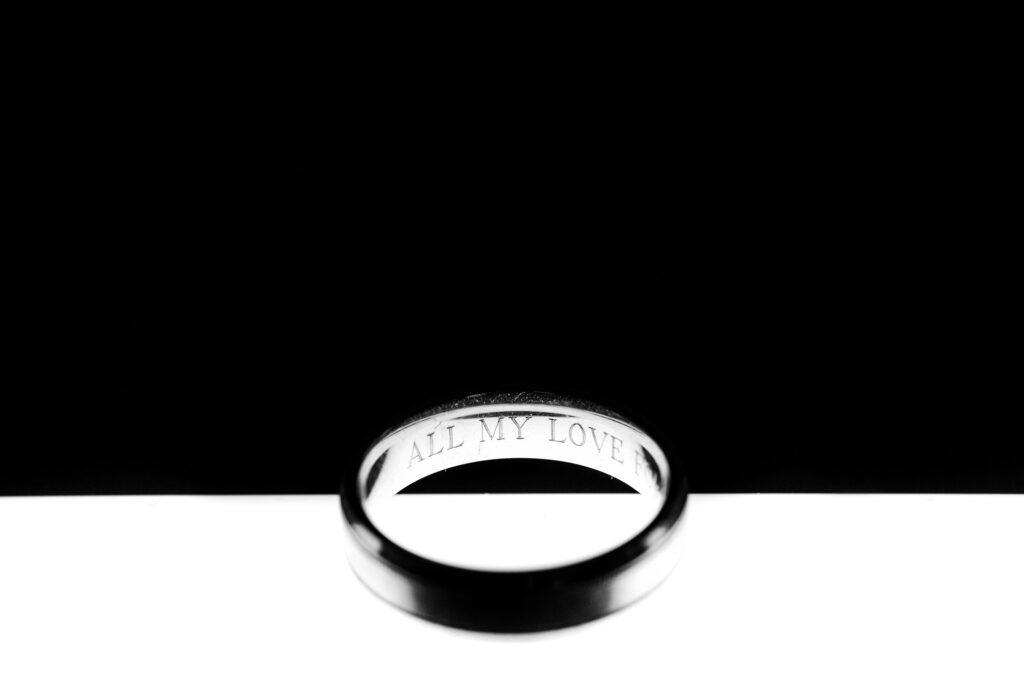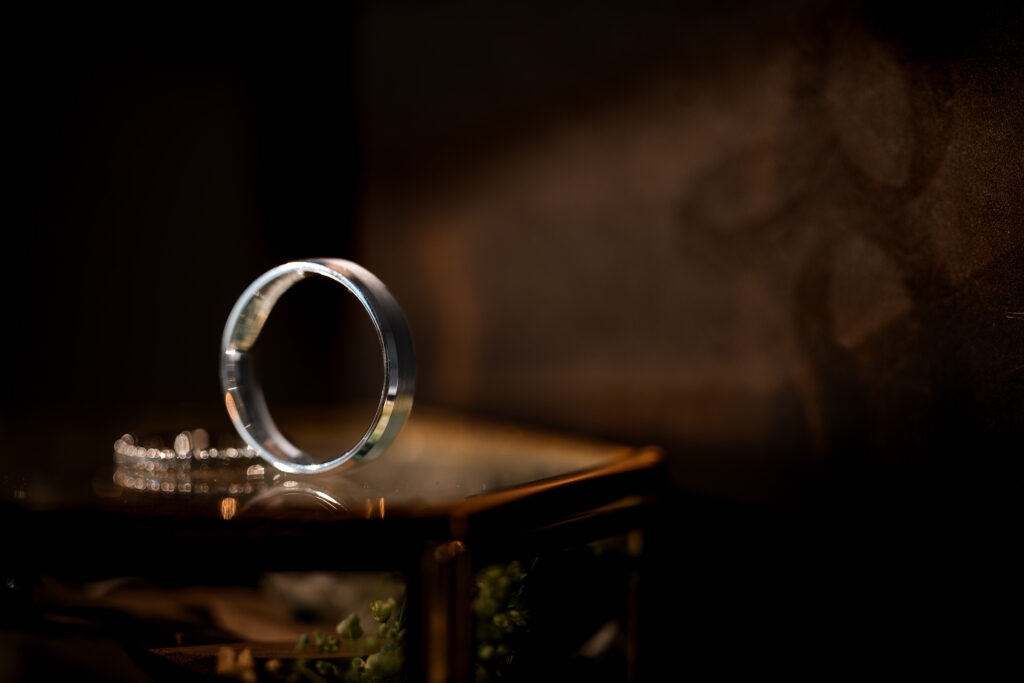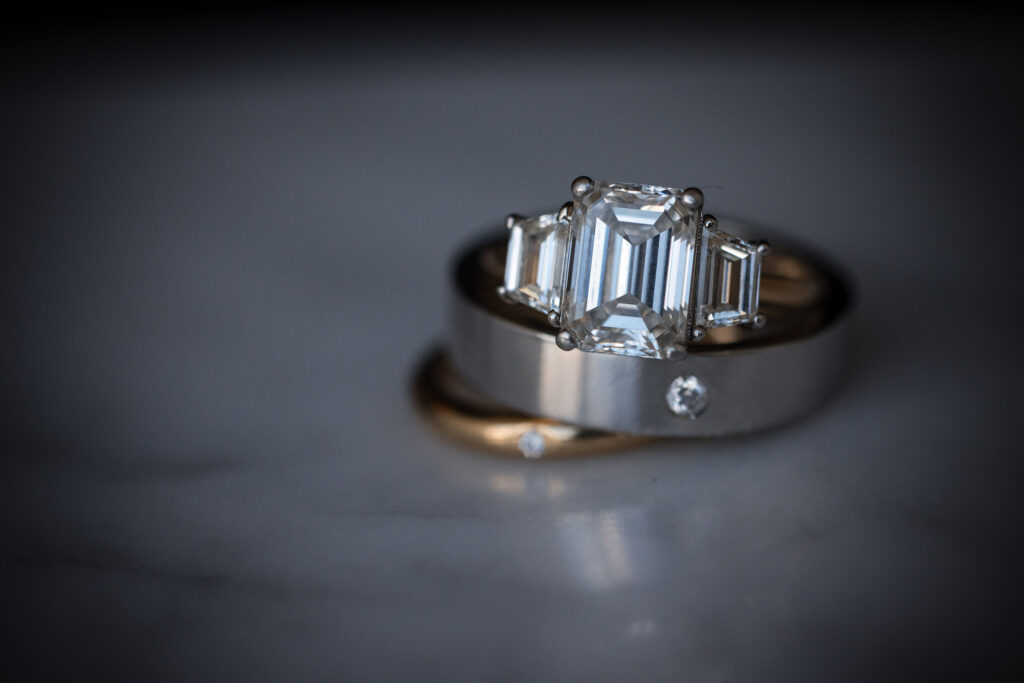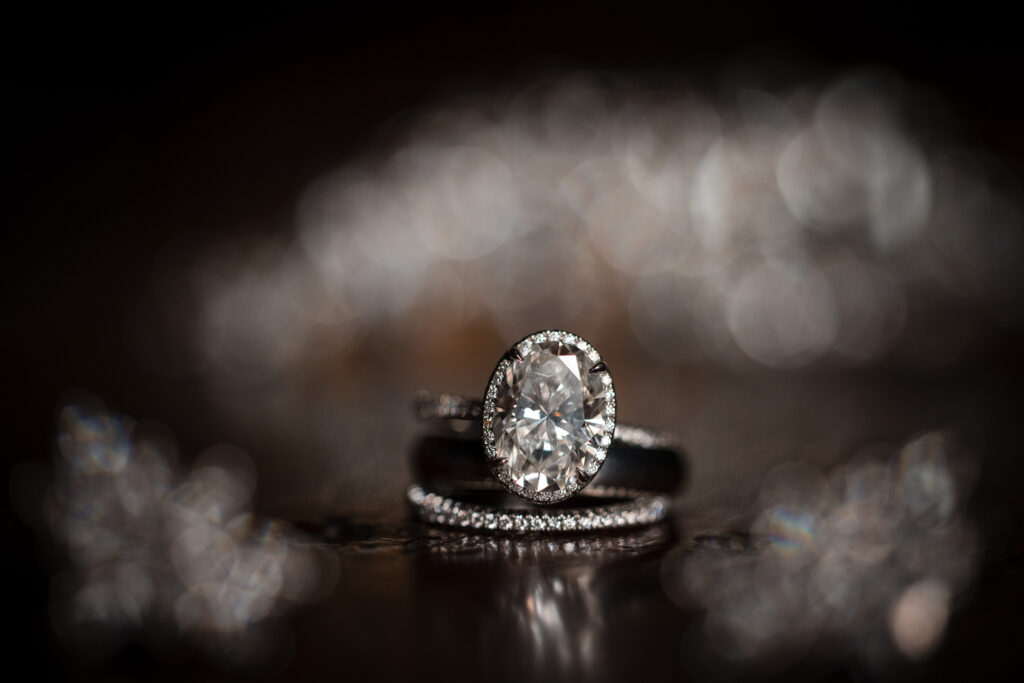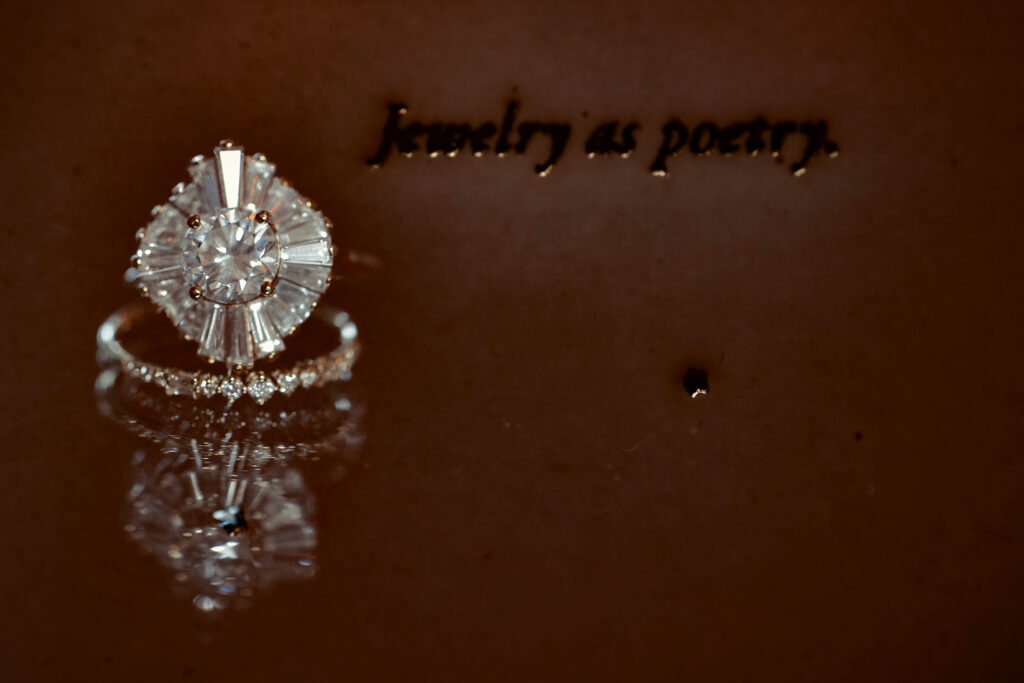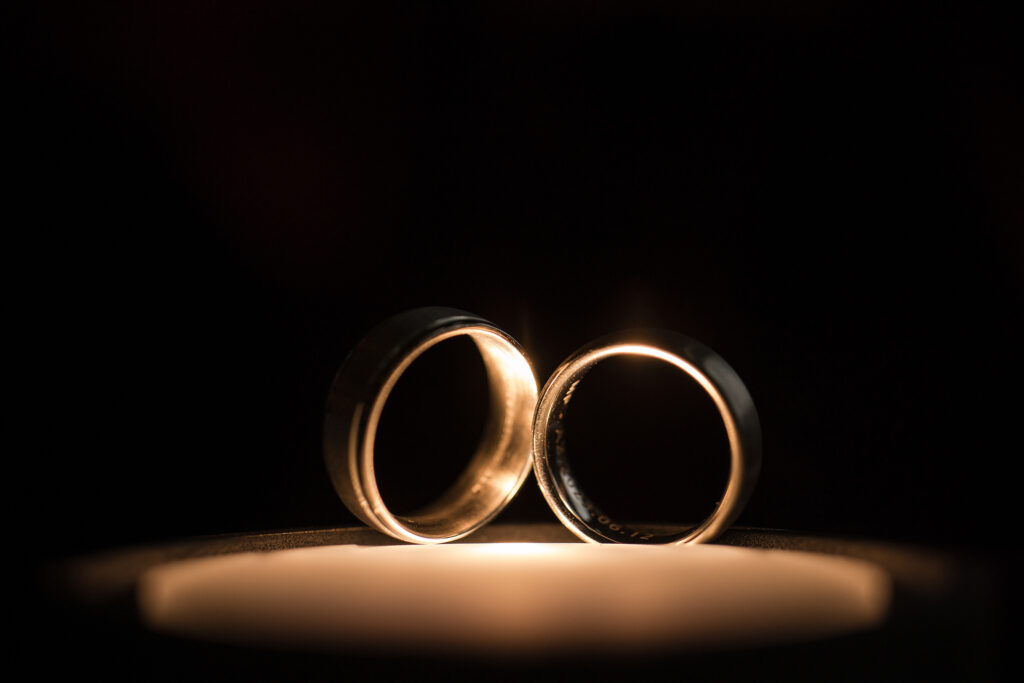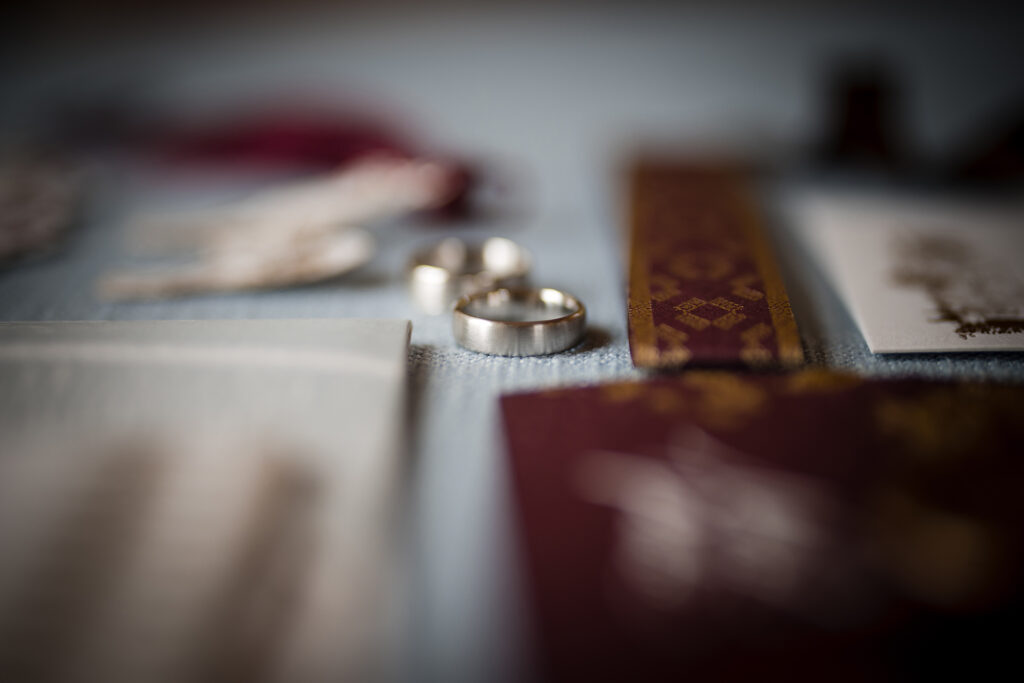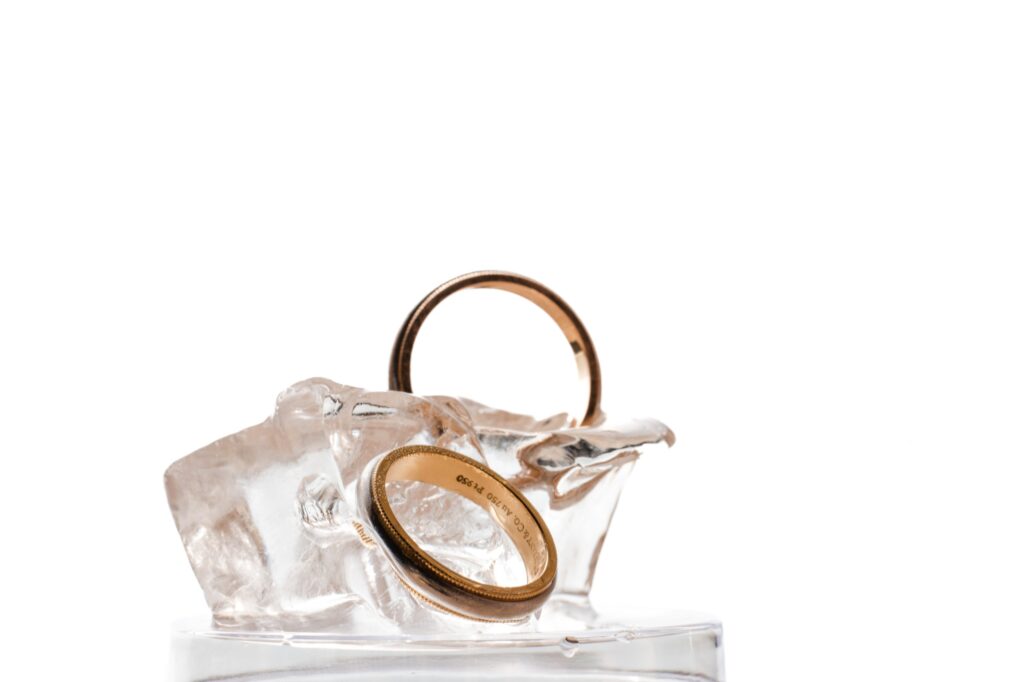Wedding rings have been a symbol of love and commitment for centuries, transcending cultures and eras with their unending circle symbolizing eternal unity. But how did this enduring symbol come to be? From ancient rituals to modern expressions of love, the evolution of wedding rings is as rich and varied as the stories they represent.
Ancient Beginnings of Wedding Rings
The practice of exchanging wedding rings, a tradition now central to many marriage ceremonies worldwide, finds its roots in the ancient civilization of Egypt, over 3000 years ago. This enduring symbol began with the Egyptians’ profound reverence for circles, which they viewed not just as shapes but as powerful symbols of eternity. The circle’s continuous loop, with no discernable beginning or end, resonated with their beliefs about the eternal nature of life and love.
To embody this symbolism, the ancient Egyptians crafted rings from materials readily available to them, such as braided reeds, hemp, or leather. These materials, while humble, were crafted with care and skill, woven into rings to be worn as a tangible representation of a couple’s everlasting love and commitment to each other. The choice of the fourth finger of the left hand as the ring’s resting place was no accident. This specific location was believed to hold a significant meaning – it was thought to be directly connected to the heart through the “vena amoris,” a term that translates to the vein of love. This belief, though anatomically incorrect, poetically linked the ring – a symbol of unity – directly to the heart, the universal symbol of love and affection.
The simplicity of these early rings belied their profound significance. For the wearer, these rings served as a daily, visible reminder of their bond and vows to their partner. In a society where life was often transient and unpredictable, these rings were a constant, a symbol of a love and partnership that was meant to endure beyond the physical confines of the world.
Furthermore, the exchange of these rings was not just a personal symbol between the couple but also a public declaration. In a time when marriage was often considered more a matter of social and economic importance than personal sentiment, the exchange of rings signified not only an emotional bond but also a contractual agreement between families or clans. It signaled the couple’s commitment in the eyes of society, solidifying their union in both personal and public realms.
Over the centuries, as this tradition was adopted and adapted by different cultures and civilizations, the materials and designs of the rings evolved. Yet, the symbolic significance imparted by those ancient Egyptians – the circle as a representation of eternal love, and the ring as a link to the heart – has remained a powerful, enduring element in the narrative of love and commitment that is central to the institution of marriage. This ancient practice, started by a civilization long gone, continues to resonate deeply in modern times, transcending cultures, and centuries.
Roman Adaptations of Wedding Rings
When the tradition of exchanging rings migrated from ancient Egypt to Rome, it underwent a significant transformation that mirrored the Roman perspective on marriage. The Romans, known for their pragmatic approach to social and legal matters, embraced the practice of exchanging rings, but they infused it with a symbolism that reflected their views on marriage as a contractual and binding agreement between families.
In Roman society, the wedding ring transitioned from being merely a symbol of love to a marker of mutual consent and obligation. The Romans crafted their rings from iron, a material chosen for its strength and durability. The use of iron in crafting these rings was symbolic; it represented the permanence and resilience of the bond being formed through marriage. In a sense, the iron ring was not just a token of affection but a physical embodiment of a binding legal contract.
As time progressed, the Romans began to imbue these rings with greater aesthetic value. The once simple iron bands evolved into more ornate and decorative pieces. Craftsmen began engraving these rings with intricate motifs and symbols. These engravings often depicted themes of love, fidelity, and companionship, reflecting the personal and emotional aspects of marriage. This evolution marked a shift from the purely utilitarian iron bands to objects of beauty and artistry, which were still deeply rooted in the legal and social implications of marriage.
In addition to their role as symbols of marital contracts, these rings also began to take on a public function, signifying the social status and personal wealth of the wearer. The design and material of the ring could indicate the couple’s position in society. Over time, the material of the rings began to diversify, with wealthier Romans opting for more precious metals like gold, further emphasizing the status aspect of the marriage.
This blend of practicality, symbolism, and artistry in Roman wedding rings laid the groundwork for many modern Western marriage traditions. The ring’s evolution from a simple iron band to a more ornate piece mirrored the Roman society’s complex views on marriage, intertwining legal, social, and personal threads. The Roman adaptation of the wedding ring tradition highlights how cultural practices are shaped and reshaped across time and societies, retaining core symbolism while adapting to the values and aesthetics of each era.
Renaissance Opulence of Wedding Rings
During the Renaissance, a period renowned for its remarkable cultural and artistic flourishing, wedding rings transcended their traditional roles to become exquisite works of art. This era, marked by a resurgence of interest in the classical arts and humanism, saw a significant transformation in the design and symbolism of wedding rings.
One of the most notable innovations of this period was the introduction of the ‘Gimmel’ ring. These rings, embodying the era’s artistic and intellectual spirit, featured a unique design of interlocking bands. Typically, a Gimmel ring would consist of two or three intricately designed bands that fit together to form a single, cohesive unit. The mechanics of these rings were not just a testament to the goldsmith’s skill but also symbolized the coming together of separate lives in marriage.
The symbolism of the Gimmel ring was rich and multifaceted. The interlocking nature of the bands represented unity and the inseparable bond of the couple. When separated, the individual bands could be worn by the engaged couple, and upon marriage, the bands would be reunited into one ring, symbolizing the completion and consummation of the marriage. This physical reuniting of the ring’s parts was a powerful metaphor for the union of two individuals in matrimony.
Moreover, these rings often featured elaborate engravings and embellishments, including inscriptions, motifs, and precious stones. The engravings often included love symbols, such as hearts, or inscriptions of romantic verses and pledges. The use of gemstones like diamonds, rubies, and sapphires added further layers of meaning, with each stone carrying its own symbolic significance.
The popularity of Gimmel rings during the Renaissance also reflected the era’s increasing emphasis on romantic love and personal choice in marriage. Unlike earlier times, where marriages were often arranged for social or economic reasons, the Renaissance saw a growing trend of marriages based on mutual affection. The Gimmel ring, with its intricate design and romantic symbolism, was well-suited to this evolving concept of marriage.
In addition to Gimmel rings, the Renaissance period also saw the development of other ornate ring styles. This was a time when jewelry was used to display wealth, social status, and personal taste, and wedding rings were no exception. Goldsmiths of the era pushed the boundaries of their craft, creating rings of exceptional beauty and intricacy.
In summary, the Renaissance period marked a significant evolution in the history of wedding rings. The period’s emphasis on artistry, personal expression, and the burgeoning concept of romantic love transformed these rings from simple symbols of commitment into elaborate works of art, rich in symbolism and beauty. The legacy of this era’s approach to wedding ring design continues to influence contemporary styles, underscoring the enduring link between marriage, art, and culture.
The Romantic Era
During the Renaissance, a period renowned for its remarkable cultural and artistic flourishing, wedding rings transcended their traditional roles to become exquisite works of art. This era, marked by a resurgence of interest in the classical arts and humanism, saw a significant transformation in the design and symbolism of wedding rings.
One of the most notable innovations of this period was the introduction of the ‘Gimmel’ ring. These rings, embodying the era’s artistic and intellectual spirit, featured a unique design of interlocking bands. Typically, a Gimmel ring would consist of two or three intricately designed bands that fit together to form a single, cohesive unit. The mechanics of these rings were not just a testament to the goldsmith’s skill but also symbolized the coming together of separate lives in marriage.
The symbolism of the Gimmel ring was rich and multifaceted. The interlocking nature of the bands represented unity and the inseparable bond of the couple. When separated, the individual bands could be worn by the engaged couple, and upon marriage, the bands would be reunited into one ring, symbolizing the completion and consummation of the marriage. This physical reuniting of the ring’s parts was a powerful metaphor for the union of two individuals in matrimony.
Moreover, these rings often featured elaborate engravings and embellishments, including inscriptions, motifs, and precious stones. The engravings often included love symbols, such as hearts, or inscriptions of romantic verses and pledges. The use of gemstones like diamonds, rubies, and sapphires added further layers of meaning, with each stone carrying its own symbolic significance.
The popularity of Gimmel rings during the Renaissance also reflected the era’s increasing emphasis on romantic love and personal choice in marriage. Unlike earlier times, where marriages were often arranged for social or economic reasons, the Renaissance saw a growing trend of marriages based on mutual affection. The Gimmel ring, with its intricate design and romantic symbolism, was well-suited to this evolving concept of marriage.
In addition to Gimmel rings, the Renaissance period also saw the development of other ornate ring styles. This was a time when jewelry was used to display wealth, social status, and personal taste, and wedding rings were no exception. Goldsmiths of the era pushed the boundaries of their craft, creating rings of exceptional beauty and intricacy.
In summary, the Renaissance period marked a significant evolution in the history of wedding rings. The period’s emphasis on artistry, personal expression, and the burgeoning concept of romantic love transformed these rings from simple symbols of commitment into elaborate works of art, rich in symbolism and beauty. The legacy of this era’s approach to wedding ring design continues to influence contemporary styles, underscoring the enduring link between marriage, art, and culture.
Modern Wedding Ring Trends and Personalization
In the contemporary world, the concept of wedding rings has evolved dramatically, mirroring the diversity and individualism that characterize modern relationships. No longer confined to the traditional norms of design and material, today’s wedding rings offer a vast array of choices, catering to the unique preferences and lifestyles of couples.
The materials used in wedding rings have expanded far beyond the classic gold band. While gold remains a popular choice due to its timeless appeal and symbolism, other metals have gained popularity for their distinct qualities. Platinum, with its durability and elegant sheen, has become a sought-after choice for those seeking a blend of luxury and resilience. Titanium rings have also emerged as a favorite, especially for those who prioritize strength and lightweight comfort. Titanium’s hypoallergenic properties and modern, minimalist aesthetic make it a suitable choice for many.
Another innovative option that has risen in popularity is the use of silicone in wedding rings. Silicone rings cater to individuals with active lifestyles or professions that demand practicality and safety, such as athletes, healthcare workers, or tradespeople. These rings are flexible, non-conductive, and can withstand rugged use, making them an ideal alternative for those who find traditional metal rings impractical for daily wear.
The realm of design in wedding rings has seen a similar expansion. Contemporary designs range from the sleek and simple to the intricate and avant-garde. The incorporation of diverse gemstones, textured finishes, and unconventional shapes allows couples to choose rings that truly resonate with their personal style and the narrative of their relationship.
Personalization has become a cornerstone in modern wedding ring selection. Many couples now choose to have their rings custom-made, creating a design that is entirely unique to their bond. Engravings, too, have become more personalized, with couples opting for meaningful dates, symbols, or even fingerprints and handwritten messages inscribed inside the band.
A touching trend in the customization of wedding rings is the incorporation of inherited jewelry pieces. Some couples choose to have their rings made using diamonds or metals from family heirlooms, infusing their rings with historical significance and sentimental value. This practice not only honors family traditions but also fosters a sense of continuity and connection to previous generations.
In essence, the modern landscape of wedding rings is a reflection of the individuality and diversity of contemporary couples. The shift from standard designs to a more personalized approach speaks volumes about the importance of individuality in modern relationships. Today’s wedding rings are not just symbols of love and commitment; they are expressions of personal identity and the unique journey of each couple, encapsulating the essence of their relationship in a piece of artful craftsmanship.
Conclusion
The evolution of wedding rings from ancient Egypt to modern times tells a story of love, tradition, and cultural shifts. While styles and materials have changed, the symbolism remains constant – a circle of love, without beginning or end, signifying the eternal bond between two people. As we look to the future, the wedding ring will undoubtedly continue to evolve, yet its significance as a symbol of unity and love will remain timeless.
